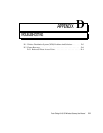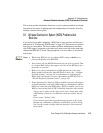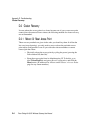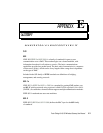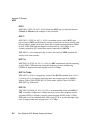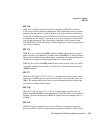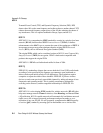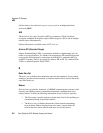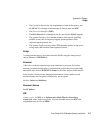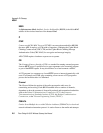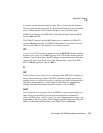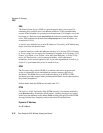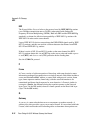Psion Teklogix 9160 G2 Wireless Gateway User Manual E-5
Appendix E: Glossary
802.1p
802.1p
802.1p is an extension of the IEEE 802 standard and is responsible for QoS
provision. The primary purpose of 802.1p is to prioritize network traffic at the data
link/ MAC layer. 802.1p offers the ability to filter multicast traffic to ensure it
doesn’t increase over layer 2 switched networks. It uses tag frames for the
prioritization scheme.
To be compliant with this standard, layer 2 switches must be capable of grouping
incoming LAN packets into separate traffic classes.
802.1Q
IEEE 802.1Q is the IEEE standard for Virtual Local Area Networks (VLANs)
specific to wireless technologies. (See
http://www.ieee802.org/1/pages/802.1Q.html
.)
The standard addresses the problem of how to break large networks into smaller
parts to prevent broadcast and multicast data traffic from consuming more
bandwidth than is necessary. 802.11Q also provides for better security between
segments of internal networks. The 802.1Q specification provides a standard
method for inserting VLAN membership information into Ethernet frames.
A
Access Point
An access point is the communication hub for the devices on a WLAN, providing a
connection or bridge between wireless and wired network devices. It supports a
Wireless Networking Framework called Infrastructure Mode.
When one access point is connected to a wired network and supports a set of
wireless stations, it is referred to as a basic service set (BSS). An extended service
set (ESS) is created by combining two or more BSSs.
Ad hoc Mode
Ad hoc mode is a Wireless Networking Framework in which stations communicate
directly with each other. It is useful for quickly establishing a network in situations
where formal infrastructure is not required.



